
How Do I Create my Facebook Ads?
Many people talk about the new Facebook algorithm that makes it hard for companies to find their way around. We complain a lot, but Facebook remains an essential tool for successful communication on the web. New algorithms force us to create sponsored campaigns to achieve our goals. Facebook Ads is an ultra-powerful lever that will allow you to make yourself visible quickly, while having accurate reports.
BUT, since there is a but, it takes a minimum of experience not to have your advertising campaigns cost you an arm and a leg and bring you only few results. Over time, I have learned many tricks and I am happy to share them with you.
Before you start creating ads on Facebook, you should go to the Facebook Ads Manager, and create an ad account if you don’t already have one. The Ads Manager is very easy to use, and it allows to create several types of Facebook ads, editable even once launched.
You can simply “boost” your post directly via your page, but it’s always better to use the ad creation tool (available in the Ads Manager) so have a more effective ad that is in total coherence with your objective.
A good configuration and clear organization of your campaigns will help you optimize and evaluate the performance of your ads. With the right structure, you will be able to:
- Measure your results accurately
- Test several hearings
- Determine the most effective advertisements
How to effectively structure a Facebook campaign?
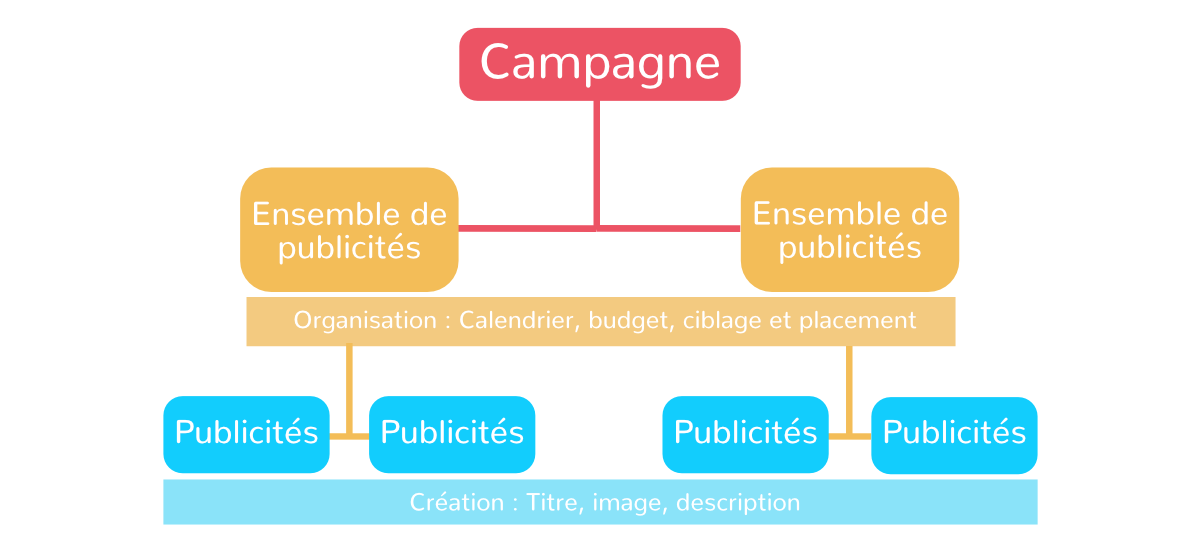
Each Facebook campaign consists of three parts:
- The campaign: it has a single objective, which corresponds to the action you want users to take when they see your different ads.
- The ad set: it defines your advertising schedule, associated budget, placement and targeting.
- The ad: it represents the creative content (images, texts, descriptions, etc).
Example: Recruitment campaign for a large company
The goal will be conversion, therefore the number of people redirected to the recruitment platform, which receives their CV. The first set of advertisements would be for administrative positions, and the second for manufacturing positions. Each ad in a set would have variations of images and descriptions.
1. Choose your goal
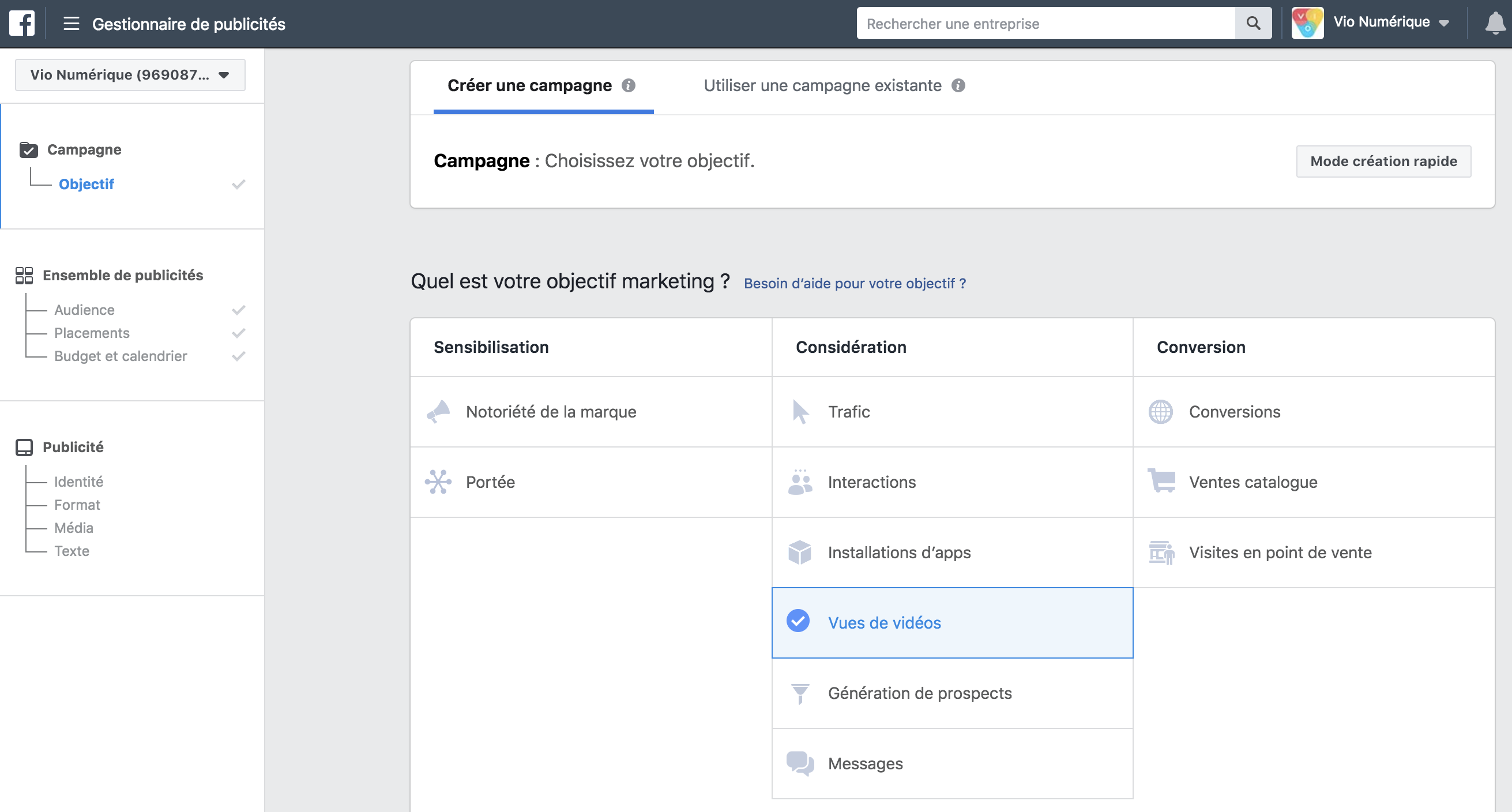
Choosing your goal is a key step in your campaign, as the goal determines who will be more likely to see your ads.
Example: Campaign to promote a new theater play with a trailer.
The goal will be video views, and Facebook will show your ad to people who often click and watch videos.
2. Choose your audience
Targeting is the second key element of your campaign. For each ad set, use a different targeting, which will very often be linked to your personas.
You can target by demographic and interest criteria, such as location, age, gender and language. This is the easiest method to use.
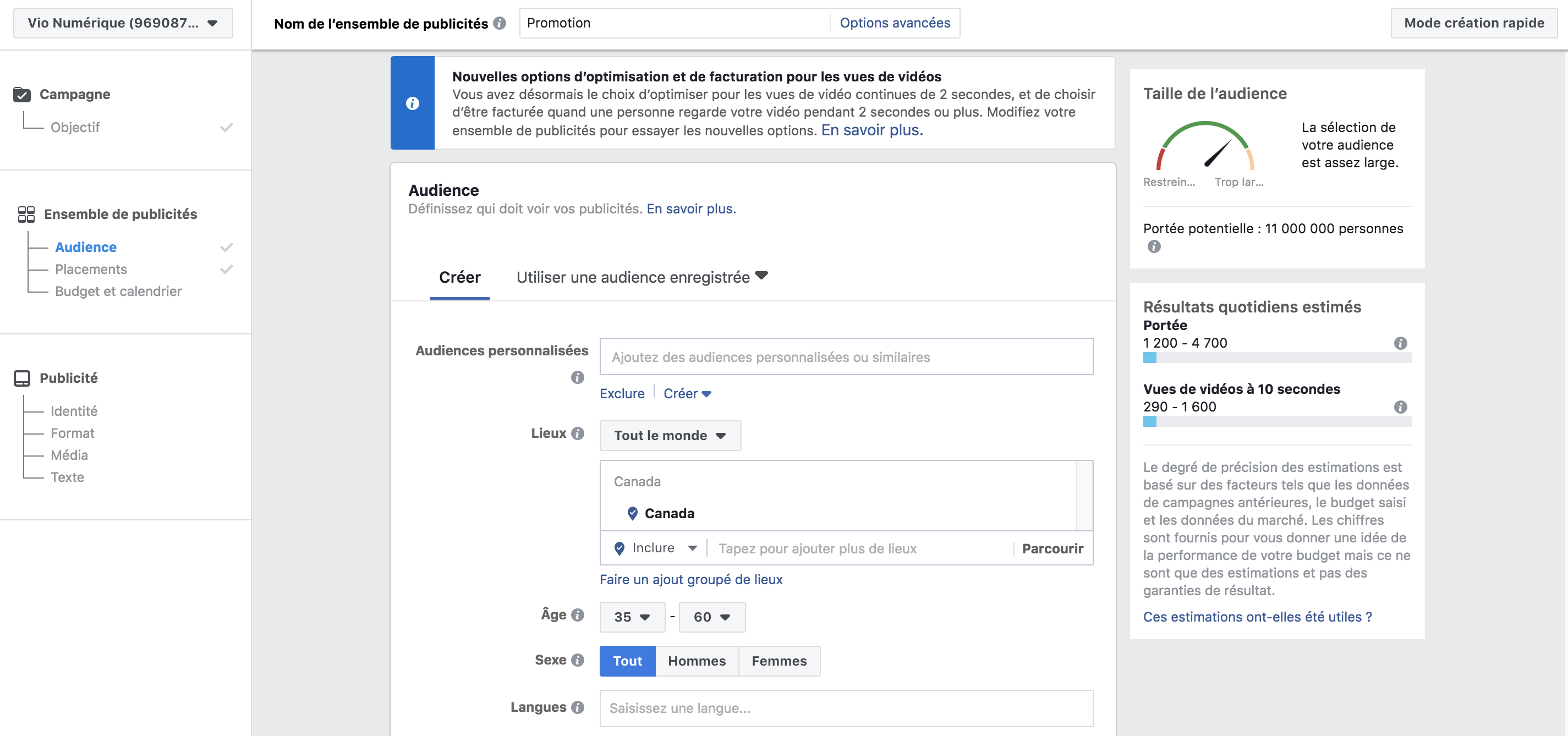
Check the size of your audience on the right barometer. It should not be too broad, otherwise there is no point since you will not reach your target, and you will get lost in the ocean of other advertisers and potential competitors.
In order to properly target your personas, you will need to use advanced targeting. It allows you to play with the interests and behaviors of your target, but also with the interactions that people have with your page or your events.
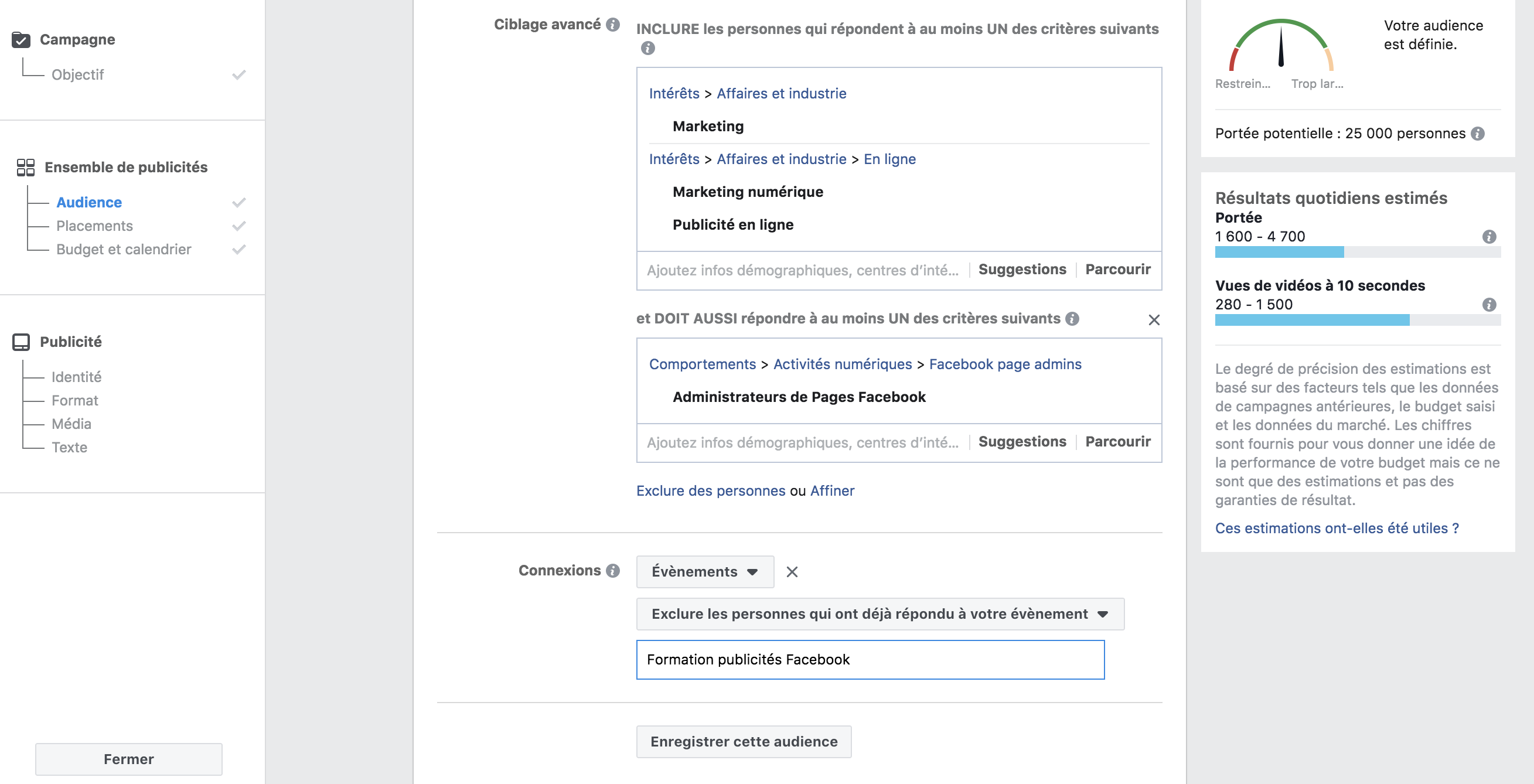
TIP
If you often have products or services to promote for the same target, save your audience so you can reuse it at will.
3. Select your investments
Ads are placed in several strategic locations on Facebook in order to reach a maximum number of users. You have the choice of selecting investments by hand, or letting Facebook choose with “automatic investments“.
For more convenience, choose automatic investments. In this way, Facebook analyzes and determines which investments are best for your ads.

Beware, some goals are not compatible with several investments.
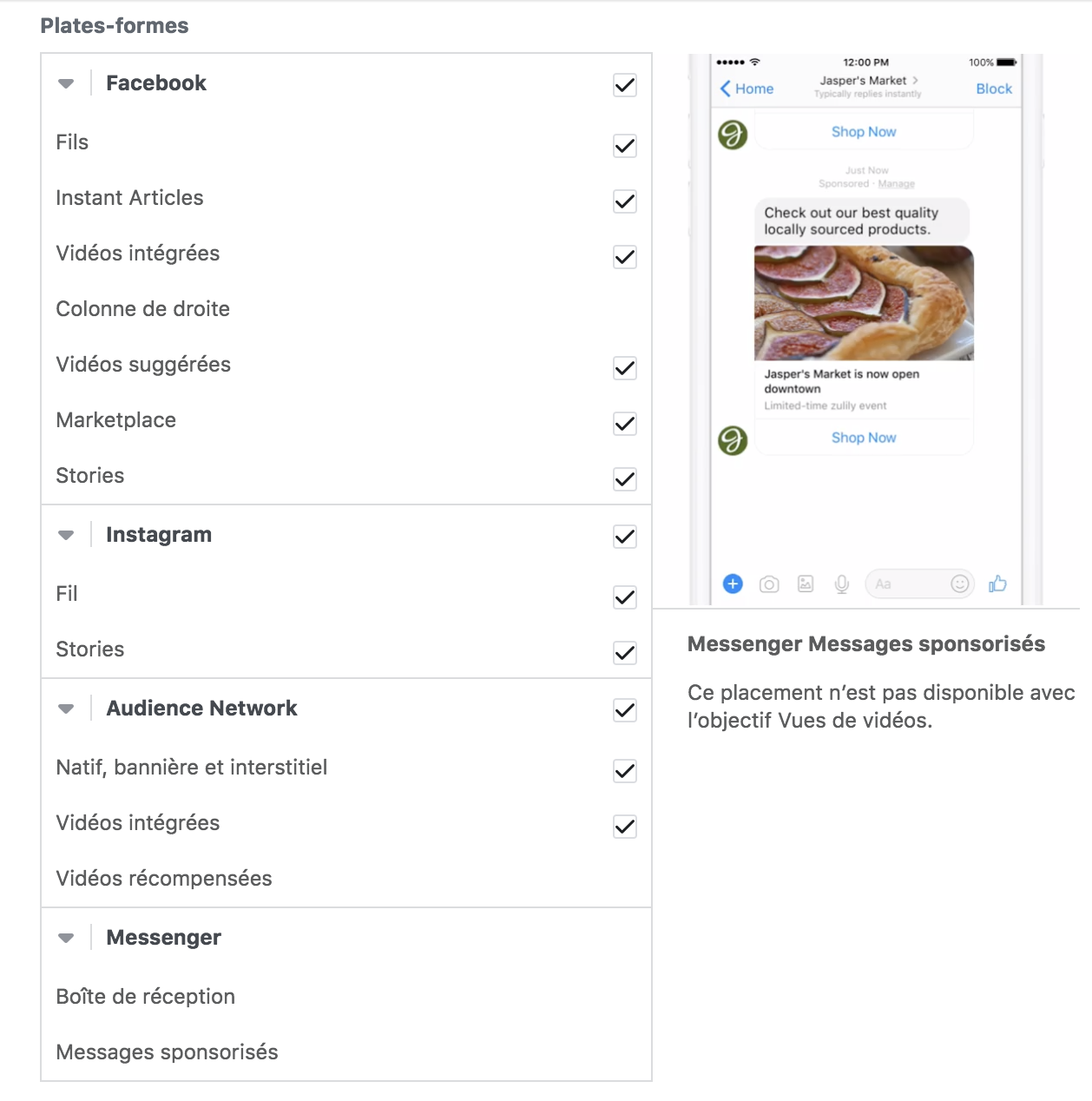
4. Manage your budget and distribution schedule
You must define the budget as well as the schedule of diffusion for all your ads. Choose a budget :
- Daily (an average budget for each day)
- Over the duration of the campaign (a maximum budget for the entire duration of the campaign)
Then, define the start and end dates of your campaign.
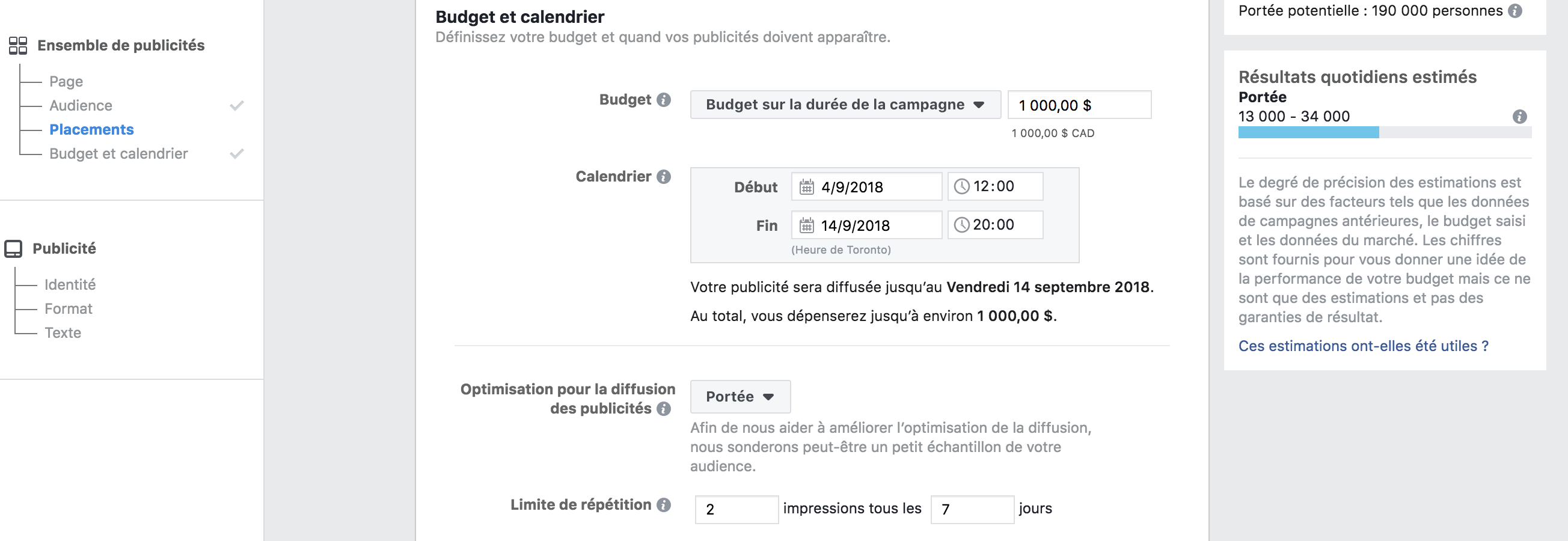
5. Bid according to your goal
The aim of auctions is to offer the best advertising to the right person at the right time.
Facebook tries to balance the value created for advertisers (by reaching their audiences) with the relevant experience offered to users. For this reason, an auction system in which both parties are represented is organised. Thanks to this, brands can reach people interested in their ads and users only see ads that interest them.
Example: If you optimize the auction with a goal of video views, you will receive your invoice when the ad is broadcasted to the people in your audience who are most likely to watch the video.
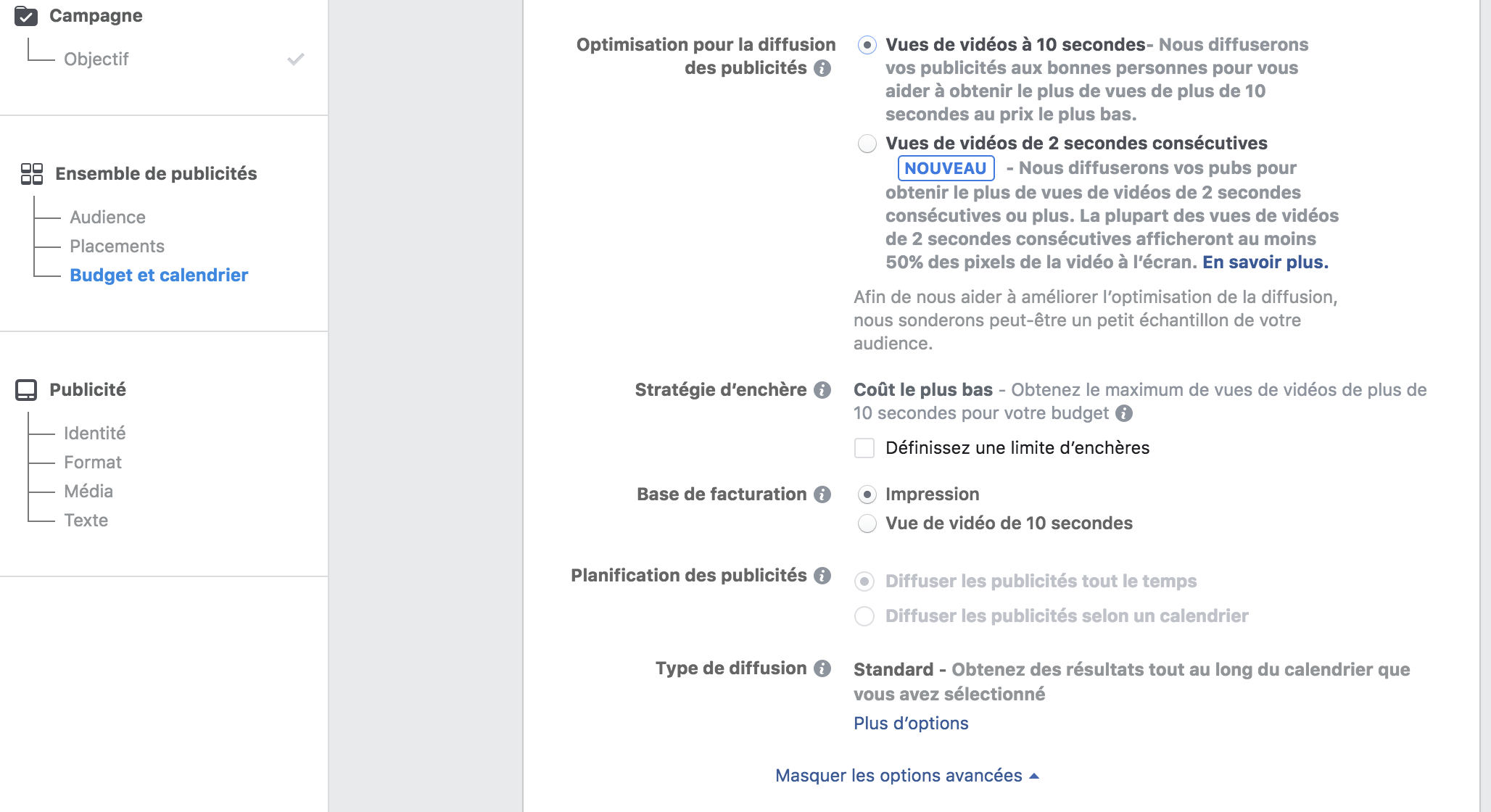
Auction winning ad is the one that creates the most total value, which is a combination of three factors:
- Auction
- Estimated action rates
- The quality and relevance of advertising
Your choice of auction determines what you pay for, so choose accordingly.
6. Create your ad
At this stage, you do all the “creative” part of your campaign, i.e. creating your ads. If needed, you can create up to 50 ads per ad set.
Be sure to select your Facebook page and Instagram account carefully and then choose the format that best suits your ad.
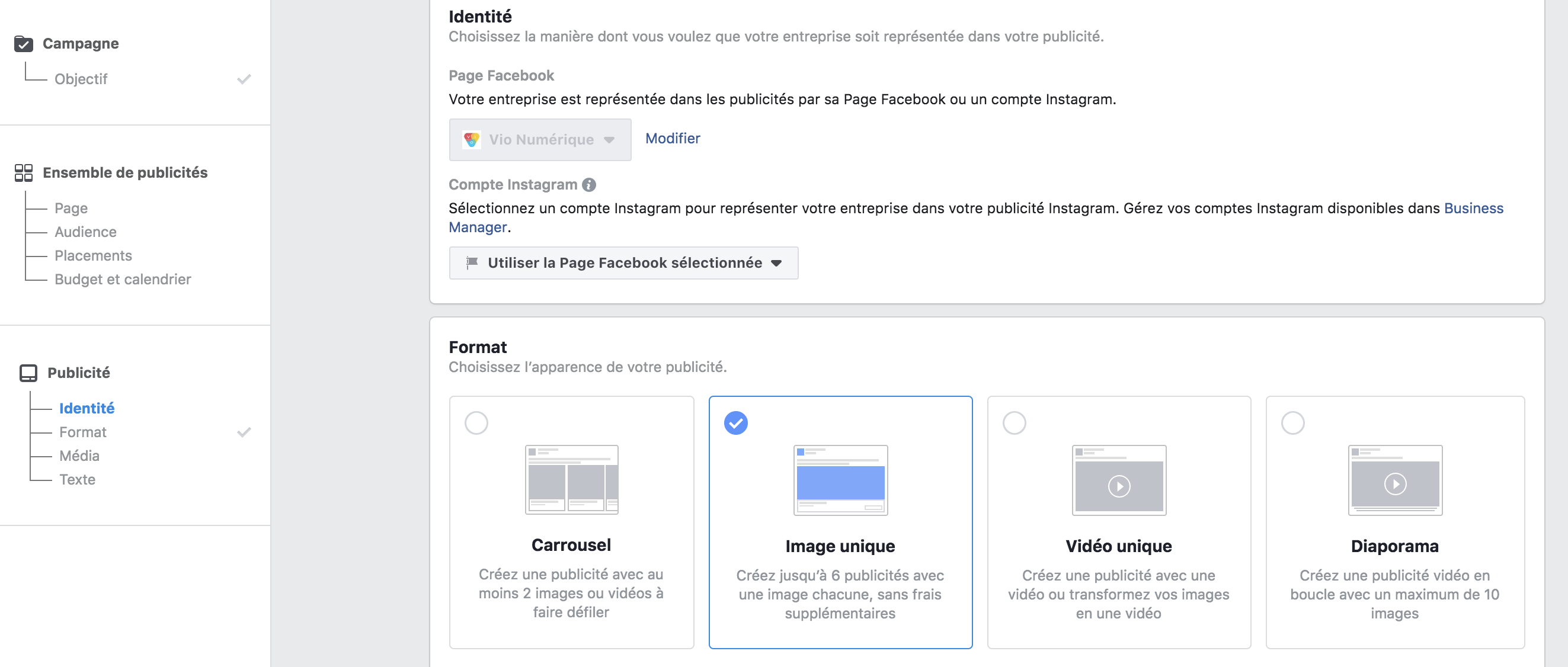
Give importance to elements such as:
- The text: To catch attention and ensure that the user understands what you are offering as quickly as possible, put a call to action from the first line.
- The title: It must not exceed 40 characters otherwise it can be cut, and it will not be displayed everywhere depending on the investments.
- The image: There should be no more than 20% text. Use Facebook’s Text Overlay tool to be sure.
- The link
- The call to action
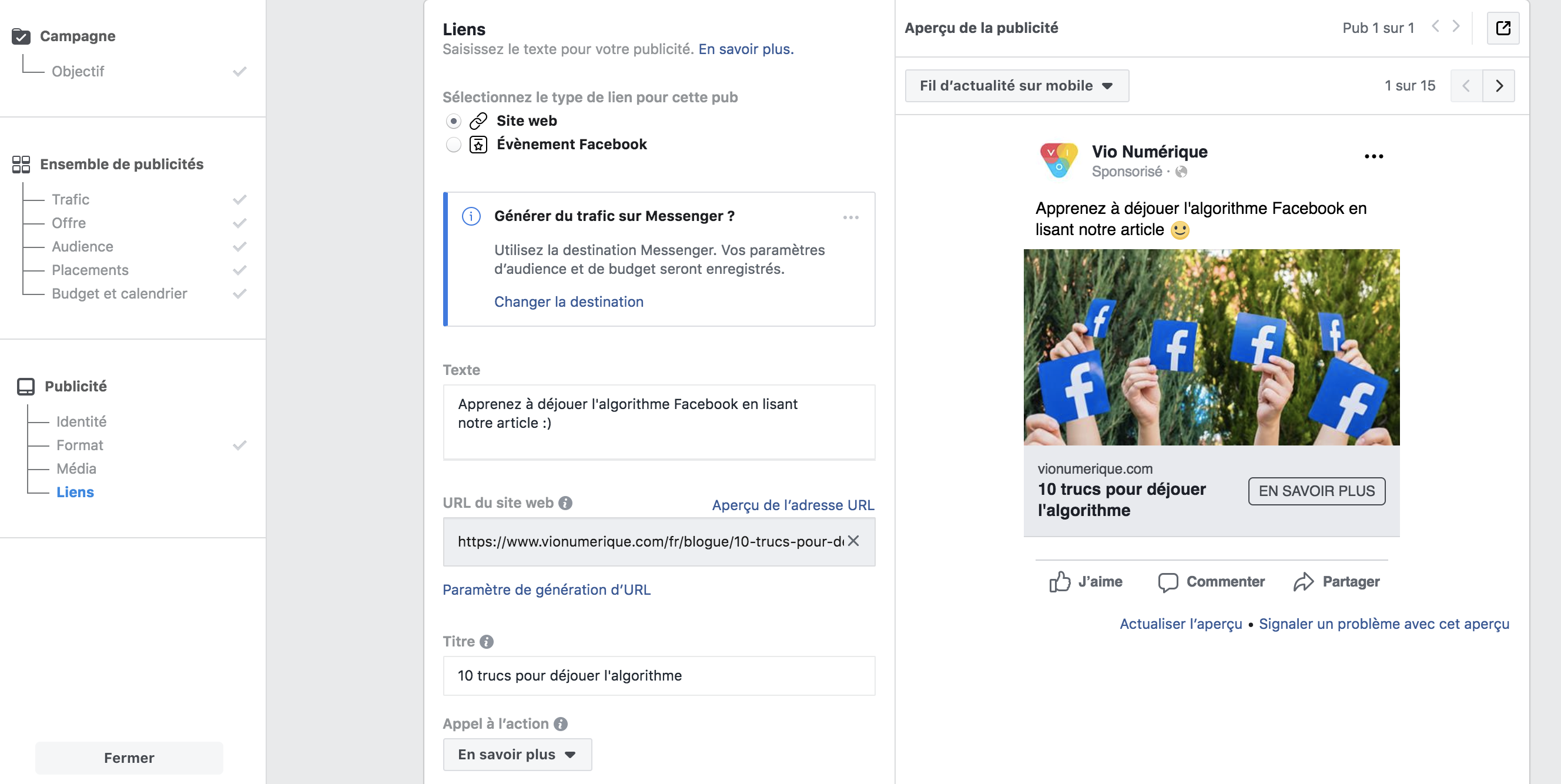
7. Test and optimize
In order to offer the best ads, Facebook offers you the option to test and optimize your ads with its integrated testing and optimization system called the split test. Just do it in the first step of creating the campaign. Facebook gives you the option to test different variables such as audience, investments, content, etc.
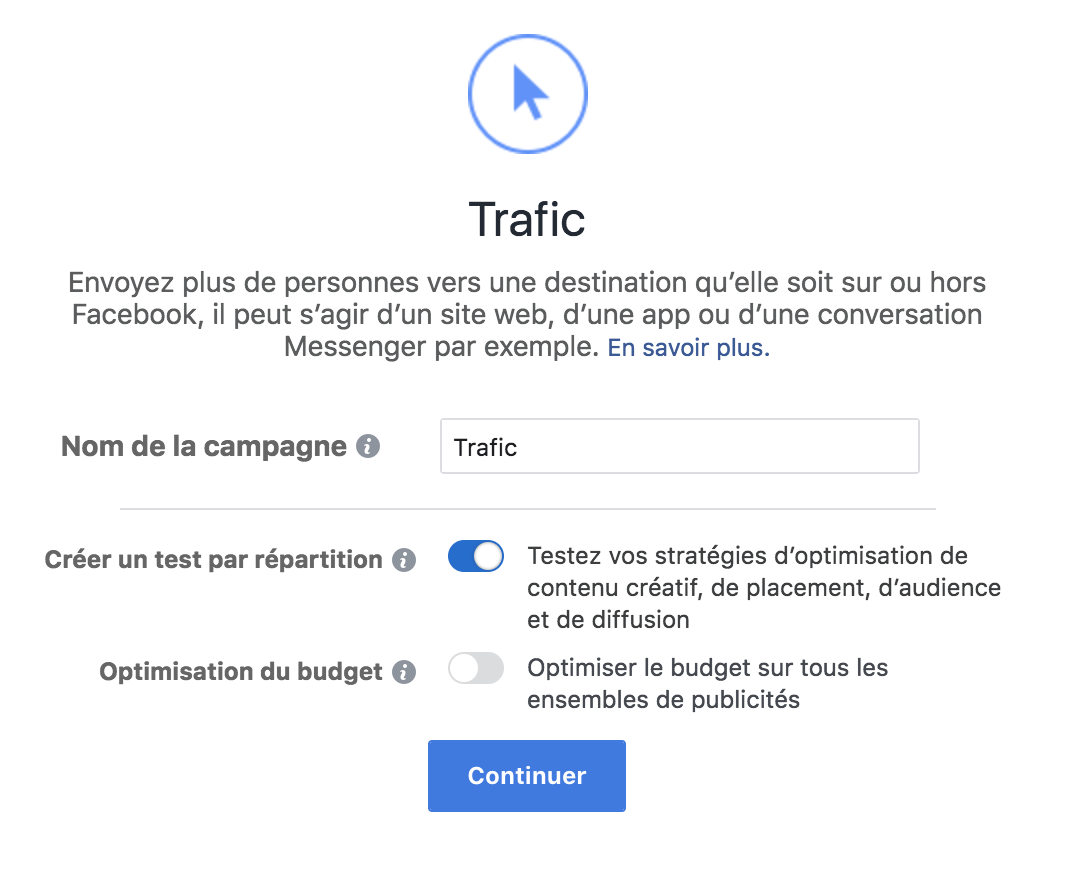
Be careful to change only one variable when testing your assumptions A and B, otherwise you will not know what change may have changed the result.
It is therefore very important to regularly review the performance of your ads and use the on/off switch to turn off the least relevant ads if necessary. Do not delete them, otherwise you will not be able to broadcast them any more.
You can then allocate budgets to refocus on the most effective ad sets.
And that’s it! By following these few tips, your advertising campaigns should be a real success.
